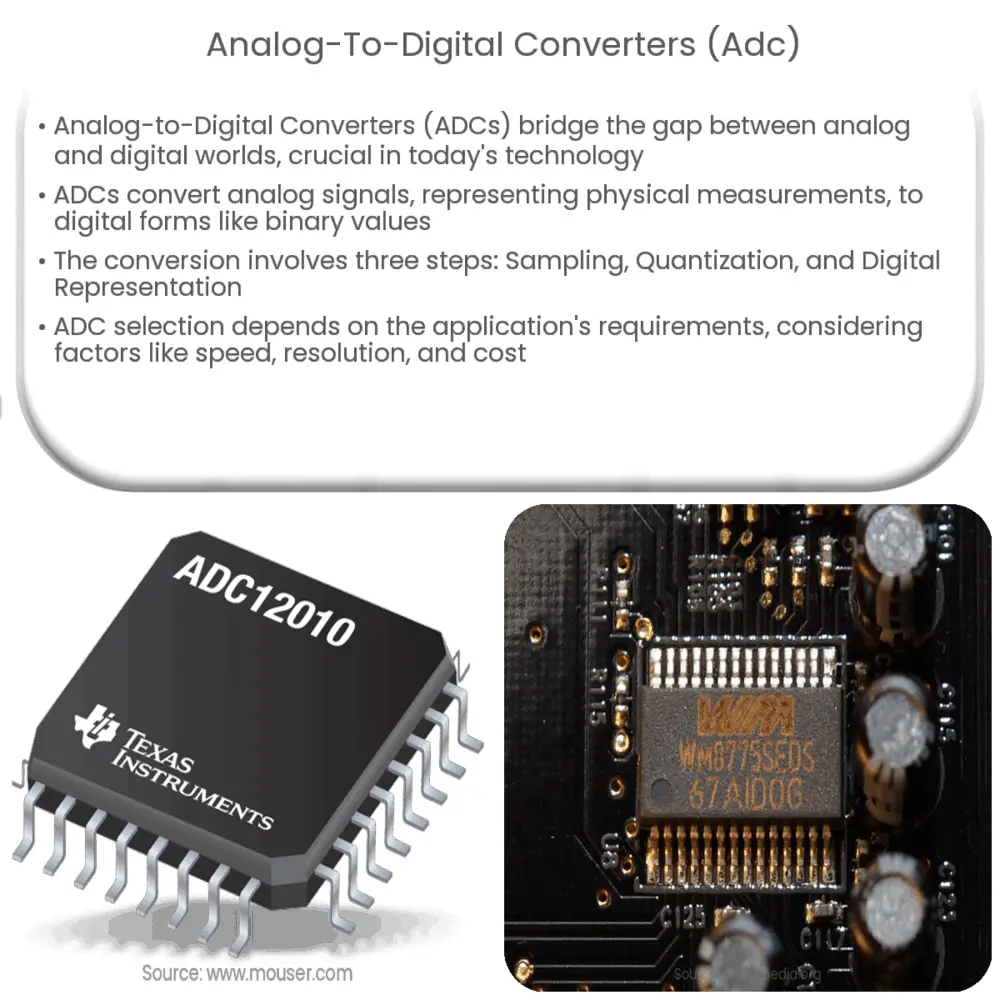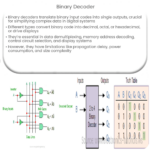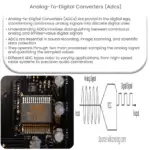Explore the importance of Analog-to-Digital Converters (ADCs), their operation, types, and performance factors in the digital era.

Understanding Analog-to-Digital Converters (ADCs)
Analog-to-Digital Converters, commonly known as ADCs, play a pivotal role in the realm of digital electronics. They serve as a bridge, facilitating the communication between the analog and digital worlds, which is crucial in today’s technology-driven society.
An ADC converts an analog signal, which is usually continuous and represents physical measurements, into a digital signal. This digital signal is a series of binary values that can be handled by digital devices such as computers. The process of converting analog signals to digital is known as digitization.
The Need for Analog-to-Digital Converters
ADCs have wide-ranging applications in various fields. From audio and video digital recording, telecommunications, data acquisition systems to precise scientific measurements, ADCs are used almost everywhere. In digital communication systems, ADCs help in converting voice and image data into digital format for efficient transmission and storage.
How an ADC Works
An ADC performs a three-step process to convert an analog signal into a digital one: Sampling, Quantization, and Digital Representation.
- Sampling: This is the first step in the conversion process. The ADC takes snapshots of the analog signal at a specific frequency, known as the sampling rate.
- Quantization: In this step, the ADC assigns a discrete value to each sampled point from a finite set of possible values.
- Digitization: Finally, the ADC encodes each quantized value into a binary sequence for digital representation.
The accuracy of an ADC’s output significantly depends on the sampling rate and the resolution. A higher sampling rate results in a more accurate reproduction of the analog signal, while a higher resolution offers more precise quantization.
Types of ADCs
There are several types of ADCs, each with its own characteristics and suitable applications. Some common types include:
- Successive Approximation Register (SAR) ADC: This type is widely used due to its balance between speed, complexity, and cost.
- Flash ADC: This is the fastest type of ADC, but it comes with high power consumption and cost.
- Integrating ADC or Dual Slope ADC: Known for its high accuracy, this type is commonly used in precision applications but has a slower conversion speed.
Choosing the right ADC type is crucial and depends on the specific needs and constraints of the application.
Pipeline and Delta-Sigma ADCs
Continuing from where we left off, there are more types of ADCs that are widely utilized:
- Pipeline ADC: These ADCs are characterized by their high sample rate and medium-to-high resolution. They’re typically found in applications that require both high speed and precision, like digital video processing.
- Delta-Sigma (ΔΣ) ADC: The ΔΣ ADCs excel in high-resolution applications such as audio processing, although they operate at slower speeds. The key advantage of these converters is their inherent noise-shaping capability that results in high-resolution digital output.
The Influence of ADC Specifications on Performance
When choosing an ADC, understanding various performance parameters is essential. These parameters include:
- Resolution: This refers to the number of discrete values an ADC can produce over the range of analog values. It is typically expressed in bits. The higher the resolution, the greater the detail in the digital representation of the analog input.
- Sampling Rate: This is the speed at which an ADC can convert analog signals to digital. The faster the sampling rate, the more samples per second an ADC can convert.
- Accuracy: This refers to how close the ADC’s output is to the true (ideal) output. Factors such as integral nonlinearity (INL) and differential nonlinearity (DNL) can affect the accuracy.
Other important specifications include power consumption, size, cost, and the ADC’s interface with digital systems.
Conclusion
Analog-to-Digital Converters (ADCs) form an integral part of many electronic systems, bridging the gap between the analog and digital worlds. Their wide-ranging applications span from audio and video recording, telecommunications, to precision scientific measurements. While there are several types of ADCs, each with its own benefits and drawbacks, the key to choosing the right one lies in understanding the application’s requirements and the specifications of the ADC.
The marvel of ADCs is their ability to transform real-world analog phenomena into the realm of digital computation, thereby enabling us to process, store, and transmit data in ways that would otherwise be impossible. Truly, ADCs serve as an indispensable cornerstone of the digital era.




